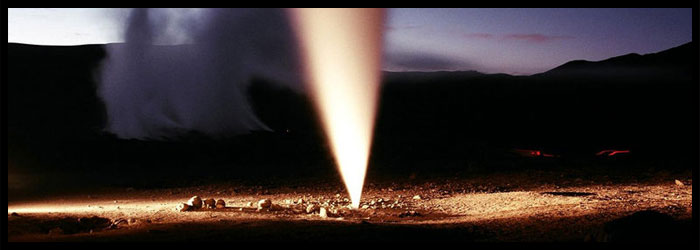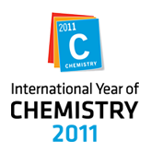
GEYSER EXPERIMENT

Date
May 21
Purpose
To demonstrate the chemical basis for the function of a geyser
Discussion
The Expedition Bolivia route takes the i2P team along the flanks of mountains, and past lakes, volcanoes, and geysers. Geysers release steam, water vapor, at intervals due to geothermal heating of water beneath the planet's surface. Depending on conditions, the steam released can be at an extremely elevated temperature. This experiment involves using the principles of chemistry to place compounds in a bottle that will mimic a volcanic eruption and a geyser.
Method
Introduce 3g MnOx to a 4L Erlenmeyer flask. Quickly yet carefully add 300 mL of 30% H2O2 solution. Repeat by introducing a small volume of soap, colored with a red food dye to the MnOx prior to introducing the peroxide. Record observations.
2H2O2(l) —(MnO)—› 2H2O(g) + O2(g)
Experiment Report & Results
Well, it was certainly time for another chemical reaction that fits into the environment of the Altiplano. The expedition members had camped in a somewhat protected valley above a lake that formed a layer of ice overnight, the temperature at 6:20 AM when the camp was awakened was -20 degrees centigrade. At the end of this day, the Youth Ambassadors will have completed their running, a total of 200 km. I set up a reaction that, at least when I performed this reaction back in my laboratory in greater Vancouver, looked more like a Geyser. The original expedition route was to take us past a real Geyser on the last day, but as with all such expeditions, the weather and other factors caused the route to change and we will not be visiting the real Geyser. Here on a vast plain, at 4,500 m (15,000 ft) above sea level, surrounded by volcanoes and ridges of rubble from long since past volcanic eruptions, I decided to increase the quantity of the reagents used, taking care to perform and test this reaction in a safe manner. After a trial run, my observation of the reaction was that it now appears to be more like a volcanic eruption than a Geyser. Into a 500 mL volumetric flask I introduced ~300 mL of concentrated (30 %) hydrogen peroxide (H2O2). I then added 4 g of Manganese Oxide (MnO2), which is a black powder. The MnO2 acts as a catalyst in the conversion of H2O2 to H2O and O2, and a heat is released. The reaction starts off slowly, likely due to the temperature of the reagents being just above 0 degrees centigrade, and then after about a minute, the reaction starts to take off.







